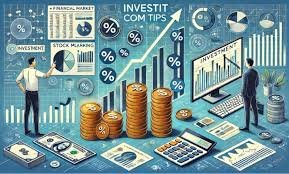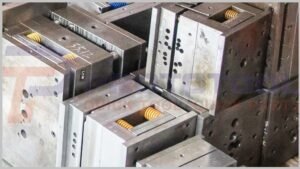Table of Contents
ToggleIntroduction to Süberlig
Süberlig is a term that has generated increasing interest across various sectors, particularly those focused on technology, industry advancements, and business innovation. Whether you are new to the concept of Optimization Süberlig or well-versed in its intricacies, understanding its origins, applications, and potential is essential for anyone interested in emerging technologies and global business dynamics.
Süberlig has emerged as a concept that bridges traditional and modern approaches, blending strategies, technologies, and ideas that are reshaping industries. But what exactly is Süberlig? This article delves deep into its definitions, applications, and implications. We’ll explore its significance and potential to drive innovation and competitive advantage.
Understanding the Concept of Süberlig
The term Süberlig, while unique, draws on foundational elements of business strategy, technology integration, and market expansion. Optimization combines technology, efficiency, and strategic growth to enhance productivity in various sectors, from manufacturing and retail to healthcare and education.
One key feature of Süberlig is its focus on high-level operational synergy, which encourages companies to optimize their workflows and processes. Optimization incorporates semantically related words like innovation, sustainability, and efficiency, each playing a significant role in how companies can gain a competitive edge. For example, in manufacturing, Optimization might mean adopting smart automation systems that streamline production while minimizing waste.
Core Components of Süberlig
To understand Optimization, consider its three primary components:
- Innovation-Driven Approach: At the heart of Optimization lies an emphasis on innovation, enabling businesses to adopt new methodologies and technologies that allow for adaptive growth.
- Process Efficiency: Süberlig values efficiency, utilizing automation and optimized workflows to reduce costs and increase productivity.
- Sustainability: As global demands shift towards environmentally friendly practices, Optimization prioritizes sustainable choices within its framework.
Each of these components forms a crucial part of Optimization, guiding businesses and individuals in adopting sustainable and competitive practices.
Historical Context of Süberlig
Though Süberlig may seem like a modern concept, its roots can be traced back to earlier movements in business management and operational efficiency. As early as the 1960s, companies began exploring ways to combine traditional approaches with evolving technological advancements. Over time, with the advent of computers and, later, artificial intelligence, these ideas evolved to create a more structured framework.
Optimization, in its current form, is essentially a refined model of these initial concepts, adapted to meet the demands of today’s fast-paced, tech-driven world. For instance, Optimization shares similarities with Lean Manufacturing and Six Sigma, but it has a more extensive focus on digital transformation.
How Süberlig Influences Modern Business Models
Today’s market landscape is vastly different from that of a decade ago, with new technologies and digital transformations shaping consumer expectations and operational standards. Here’s how Optimization integrates into modern business models:
- Adopting Digital Solutions: Optimization encourages businesses to incorporate AI, cloud computing, and big data analytics. Through data-driven insights, companies can make better-informed decisions, predict market trends, and respond swiftly to changes.
- Enhancing Customer Experience: Customer-centric businesses thrive in today’s economy, and Süberlig plays a significant role by aligning operations to meet customer demands.
- Sustainability Goals: Modern companies are embracing sustainability, not just as a trend but as a core business value. Optimization emphasizes eco-friendly initiatives, supporting companies in adopting green practices.
- Collaboration and Connectivity: In a connected world, Optimization stresses the importance of collaboration through shared platforms and networks, enabling remote work and global partnerships.
These elements combine to create a flexible, adaptive, and sustainable business model that aligns well with the needs of today’s competitive markets.
Case Studies: Süberlig in Action
Several organizations across different sectors have successfully integrated Optimization principles into their operations. Let’s examine how some notable companies have leveraged Optimization to achieve growth:
1. Technology Sector: XYZ Tech Solutions
XYZ Tech Solutions incorporated Optimization principles by creating an integrated data management system. The system improved data accuracy by 45% and significantly reduced operational costs. By implementing Süberlig’s approach to digital integration, XYZ streamlined its customer service processes and improved response times by 30%.
2. Retail Industry: EcoShop
EcoShop is a retail chain that has adopted Optimization sustainability guidelines to reduce waste in its supply chain. By adopting advanced recycling and waste management practices, EcoShop saw a 20% decrease in overall expenses related to waste disposal. Additionally, they improved brand loyalty by marketing their commitment to sustainability, resonating with environmentally conscious consumers.
3. Healthcare: MedServe
MedServe, a leading healthcare provider, has used Optimization to optimize its patient management system. With automated appointment scheduling and digital patient records, MedServe improved efficiency and patient satisfaction. Using predictive analytics, they also forecasted supply needs more accurately, reducing surplus supplies and costs.
Benefits and Challenges of Süberlig
As with any transformative approach, Süberlig has both advantages and challenges. Here, we explore these aspects to provide a balanced view.
Benefits
- Increased Efficiency: By streamlining processes, companies see quicker turnaround times, allowing them to produce more without increasing costs.
- Cost Savings: Süberlig helps reduce resource wastage, leading to significant cost savings over time.
- Sustainability: For businesses prioritizing environmental responsibility, Optimization supports green initiatives.
- Competitive Edge: Companies using Optimization principles can differentiate themselves through superior service quality and innovation.
Challenges
- High Initial Investment: Implementing new technologies requires capital, which might not be feasible for smaller enterprises.
- Training Needs: Employees may need extensive training to adapt to Optimization innovative approaches, which can be time-consuming.
- Data Security Concerns: With the heavy reliance on digital solutions, data privacy becomes a key concern, requiring robust cybersecurity measures.
Despite these challenges, many companies find that the benefits of Optimization outweigh the drawbacks, especially in the long term.
Future of Süberlig
The future of Optimization looks promising as industries continue to innovate. Emerging technologies like artificial intelligence, blockchain, and Internet of Things (IoT) are set to become even more integrated with Optimization. These technologies will enable greater connectivity, allowing businesses to operate at unprecedented levels of efficiency.
One particularly exciting prospect is quantum computing, which could revolutionize data processing speeds. When applied within the Optimization framework, quantum computing could redefine efficiency standards.
Trends to Watch in Süberlig
- AI-Driven Automation: Automation powered by AI will continue to streamline processes, eliminating manual tasks and boosting productivity.
- Advanced Sustainability Measures: Companies will likely adopt even more environmentally friendly practices as global regulations tighten.
- Increased Global Collaboration: As remote work becomes more common, Optimization principles will support cross-border partnerships and collaborations.
With advancements in technology and sustainability, Optimization has the potential to become a staple approach for forward-thinking companies.
Final Thoughts
Süberlig represents a transformative approach that emphasizes innovation, efficiency, and sustainability. Companies that embrace Optimization principles can streamline operations, improve customer satisfaction, and adopt eco-friendly practices. As more organizations integrate Optimization, it is likely to become an essential component of successful business models.
Questions and Answers
Q1: What industries can benefit the most from Süberlig?
A1: Industries that prioritize efficiency and innovation, such as technology, retail, and healthcare, are particularly well-suited for Optimization.
Q2: Is Süberlig feasible for small businesses?
A2: While initially more accessible to larger firms due to the high investment in technology, small businesses can also adopt Süberlig principles through scaled-down versions.
Q3: How does Süberlig support sustainability?
A3: Süberlig encourages eco-friendly practices and waste reduction, helping companies to meet environmental regulations.



